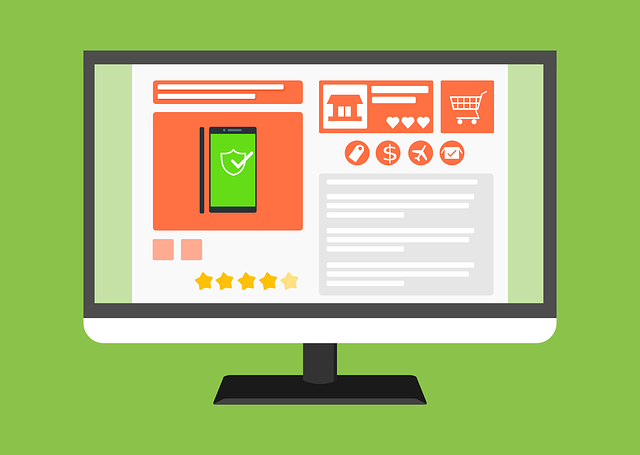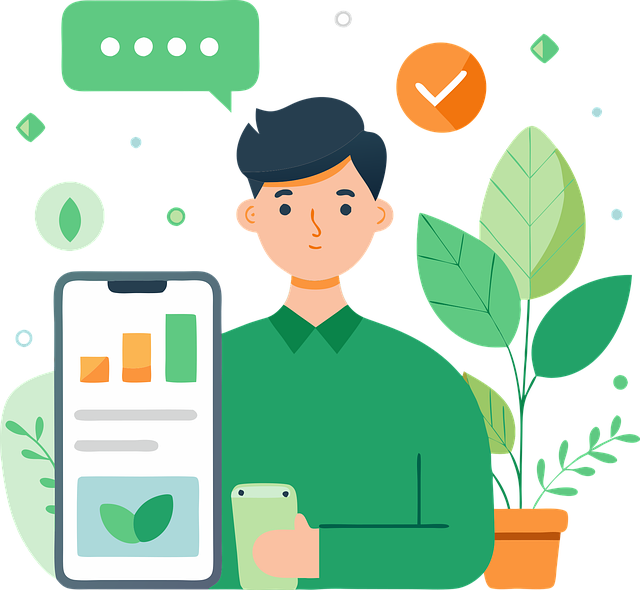AI Chatbots are transforming online interactions across industries by offering advanced natural language conversations through NLP algorithms and machine learning techniques. When designing conversation flows, envision user interactions as a journey, aligning goals with audience needs. Choosing the right technology involves cloud-based platforms like Dialogflow or open-source solutions like Rasa, along with essential NLP and ML libraries. A structured process of training, testing, and deployment ensures optimal performance, allowing AI chatbots to provide accessible, reliable conversational interfaces across multiple online channels.
Looking to create an AI chatbot for your website or app? This comprehensive guide walks you through every step, from understanding the fundamentals of AI chatbot basics to deploying your own conversational AI. Learn how to design intuitive conversation flows that engage users and choose the right technology and tools for your needs. By following these steps, you’ll be well-equipped to harness the power of ai chatbots online and enhance user experiences.
- Understanding AI Chatbot Basics
- Designing the Chatbot's Conversation Flow
- Choosing the Right Technology and Tools
- Training, Testing, and Deploying Your Chatbot
Understanding AI Chatbot Basics

AI Chatbots are becoming increasingly prevalent in our online interactions, revolutionizing customer service and enhancing user experiences across various industries. At their core, these intelligent virtual assistants leverage artificial intelligence to engage in natural language conversations with users, providing information, performing tasks, or even entertaining queries. Understanding the basics of AI Chatbot functionality is crucial when considering their development or implementation.
The foundation of any AI Chatbot lies in its ability to process and understand human language. This involves sophisticated Natural Language Processing (NLP) algorithms that enable chatbots to interpret user inputs, extract relevant information, and generate contextually appropriate responses. These bots learn from vast datasets, allowing them to evolve over time, adapt to new conversations, and provide more accurate and personalized interactions. With the advancement of machine learning techniques, AI Chatbots are becoming more sophisticated, offering seamless and human-like conversational experiences online.
Designing the Chatbot's Conversation Flow

When designing the conversation flow for an AI chatbot, it’s crucial to envision how users will interact with it, much like mapping out a journey. This involves defining clear goals and intents that align with your target audience’s needs. Start by identifying common user queries and tasks; these become the foundation of your chatbot’s dialogue. Organize these interactions into logical paths, considering potential branching scenarios where the chatbot might ask follow-up questions or offer alternative solutions.
Think of it as crafting a narrative where users guide the chatbot through a series of exchanges, ultimately achieving their desired outcome. This structured approach ensures that your AI chatbot online provides accurate and relevant responses, enhancing user satisfaction and fostering meaningful conversations.
Choosing the Right Technology and Tools

When creating an AI chatbot, selecting the appropriate technology and tools is a pivotal step that significantly influences its performance and capabilities. The first consideration is choosing a suitable platform or framework to build your chatbot on. There are various options available, ranging from cloud-based services like Dialogflow or IBM Watson, which offer pre-trained models and easy integration with other online AI chatbots, to open-source solutions such as Rasa or Botpress that provide greater flexibility and customization.
Additionally, developers need to pick the right natural language processing (NLP) and machine learning (ML) libraries based on their chatbot’s complexity and desired functionalities. Libraries like NLTK, spaCy, TensorFlow, or PyTorch are popular choices for text understanding and generation tasks. These tools empower developers to train models using diverse data sources, enabling the creation of sophisticated AI chatbots that can engage in meaningful conversations with users across various platforms.
Training, Testing, and Deploying Your Chatbot

After developing your AI chatbot, it’s crucial to employ a structured process for training, testing, and deploying it to ensure optimal performance. Training involves feeding your chatbot a diverse dataset relevant to its intended use case, whether customer service, content generation, or information retrieval. This process allows the model to learn patterns, understand context, and generate appropriate responses. Machine learning algorithms, such as natural language processing (NLP), enable the chatbot to continuously improve over time.
Testing is an iterative phase where you evaluate the chatbot’s effectiveness through various scenarios, including edge cases and potential user queries. Online testing platforms can simulate real-world interactions, helping you identify areas for improvement. By refining responses, enhancing context awareness, and minimizing errors, you ensure a seamless user experience. Once thoroughly tested, deployment allows your AI chatbot to go live, providing users with an accessible and reliable conversational interface across various online channels.
Creating an AI chatbot is a fascinating journey that involves understanding fundamentals, designing engaging conversations, and selecting the right tools. By mastering these steps – from conceptualization to deployment – you can harness the power of AI chatbots online to enhance user experiences and revolutionize your industry. With the right approach, your chatbot will not only provide valuable assistance but also become an indispensable part of your digital landscape.
